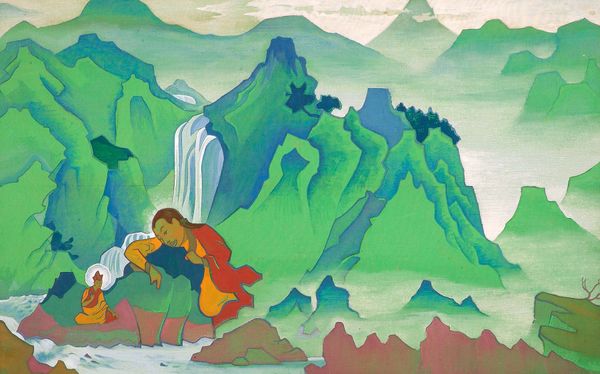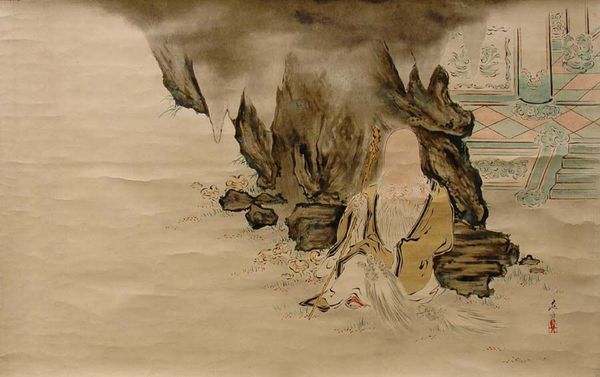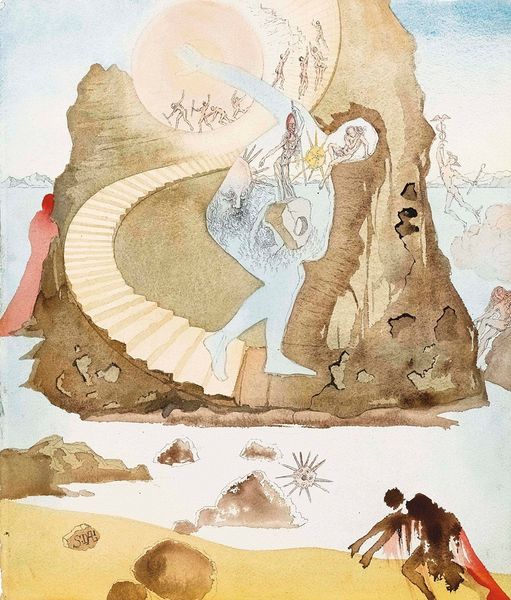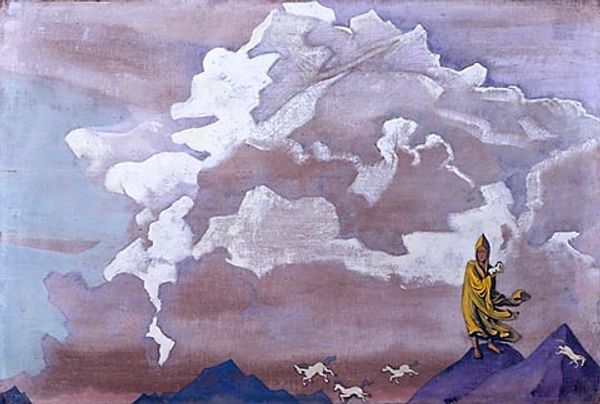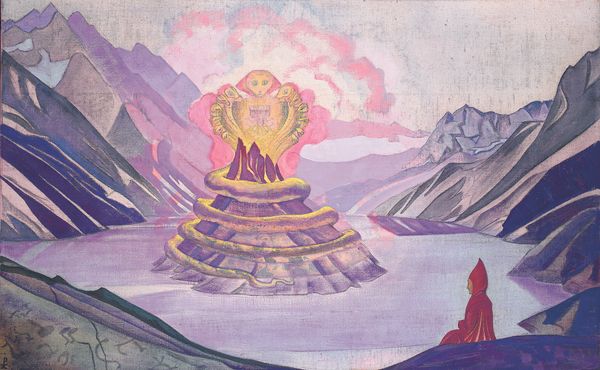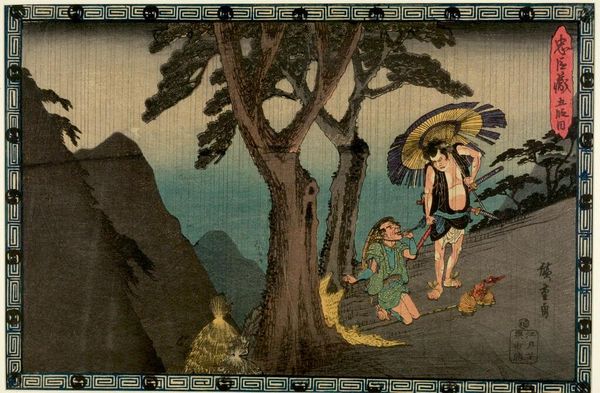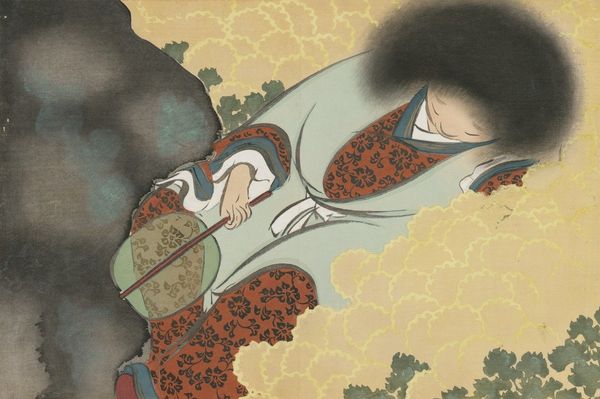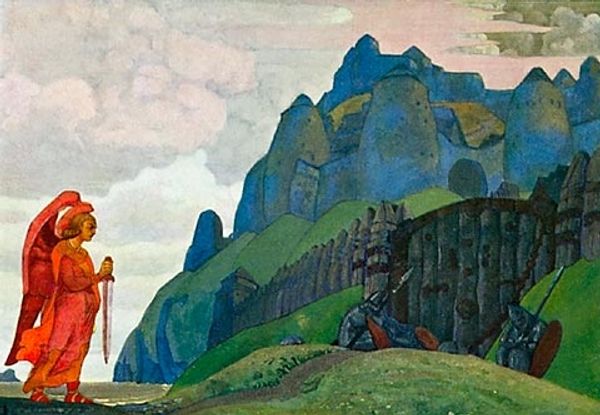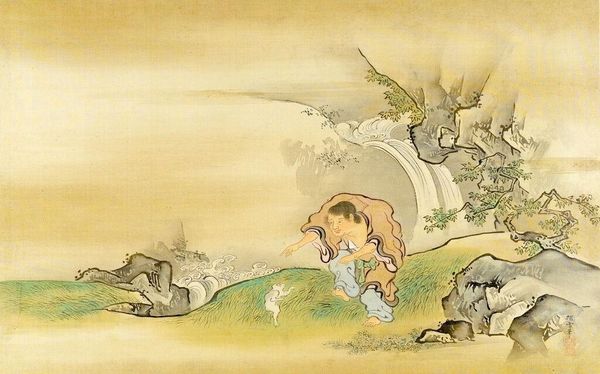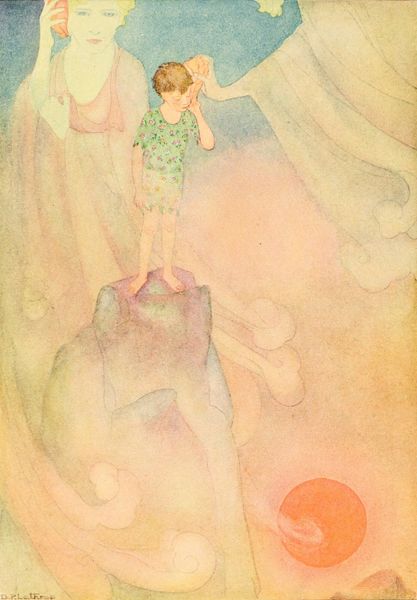
Copyright: Public domain
Editor: This is Nicholas Roerich's "Arhat," painted in 1932, using tempera and watercolor. The light in this painting is incredible! The colours are pale but powerful. What strikes me most is the contrast between the mythical, fearsome dragon, and the peaceful monk. How do you interpret this work? Curator: For me, it's about exploring the materials and their social implications. Roerich’s choice of tempera, an ancient and laborious medium, contrasted with the swift fluidity of watercolor, creates an intriguing tension. These weren’t easily accessible materials for everyone. Think about who had access to them and what kind of training they required. This contrast speaks to the shifting social structures surrounding art production. What was Roerich suggesting by bringing together such distinct traditions and materials in rendering a figure from Tibetan Buddhism? Editor: That’s interesting! I hadn’t considered the accessibility of materials. Does that relate to the subject matter too? The dragon, representing worldly power and the Arhat representing spiritual attainment? Curator: Precisely. Consider the labor invested in the pigments themselves. Were they locally sourced, reflecting Roerich’s travels and engagement with the landscape, or were they commercially produced pigments, tying the work to global markets and systems of exchange? By combining the traditionally revered subject matter of religious icons with readily available commercial pigments, isn't Roerich engaging in a quiet cultural critique of production and value systems? Editor: So it's not just the subject, but *how* it was made and what those materials represented at the time. Curator: Absolutely. And consider the symbolic *use* of those colors, versus how pigments were produced. Were some colors only permissible or available to certain societal figures? It asks us to re-evaluate established hierarchies within both art and society itself. Editor: That gives me a whole new appreciation for the painting. Thanks! Curator: My pleasure! It's amazing what focusing on materials can reveal.
Comments
No comments
Be the first to comment and join the conversation on the ultimate creative platform.
